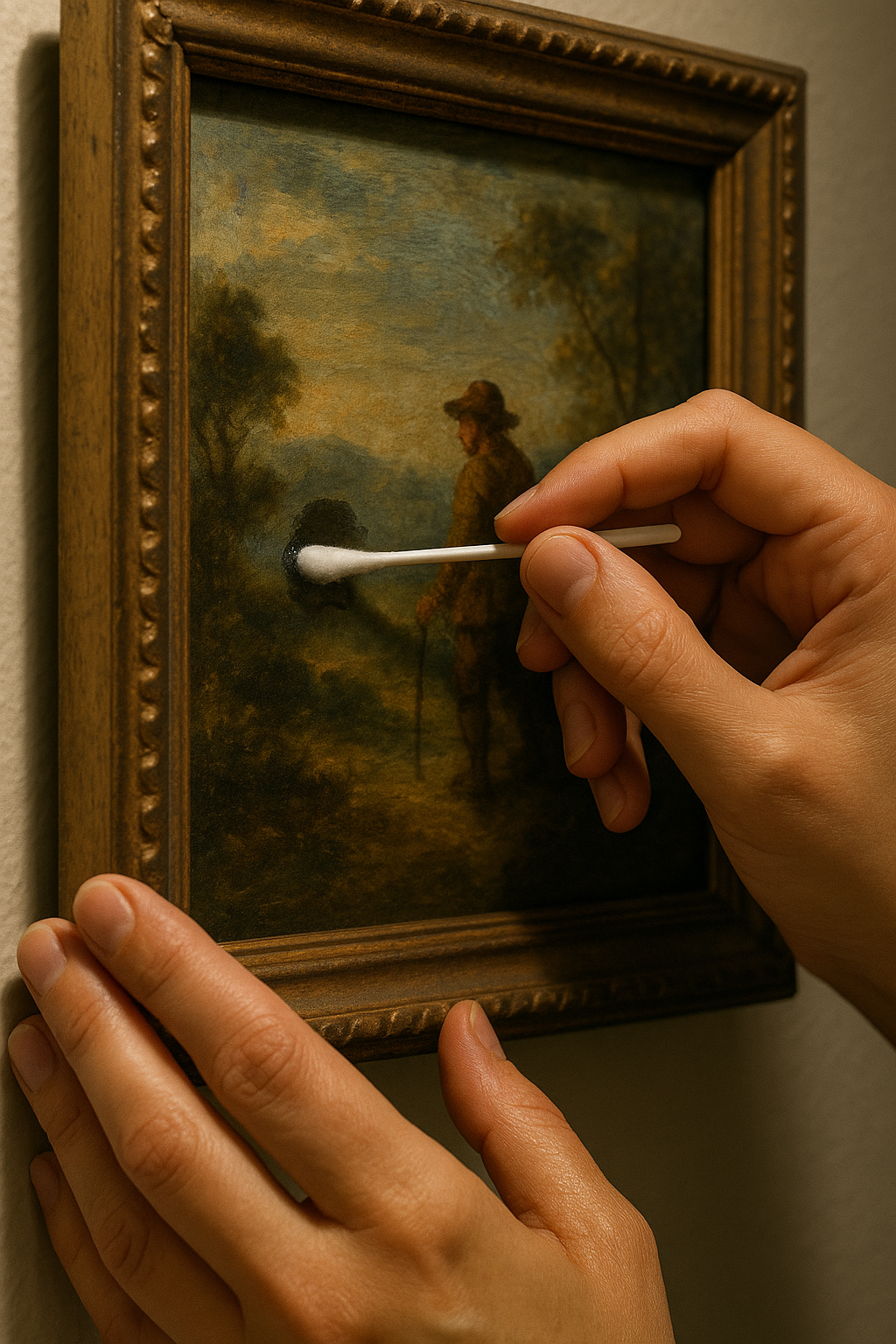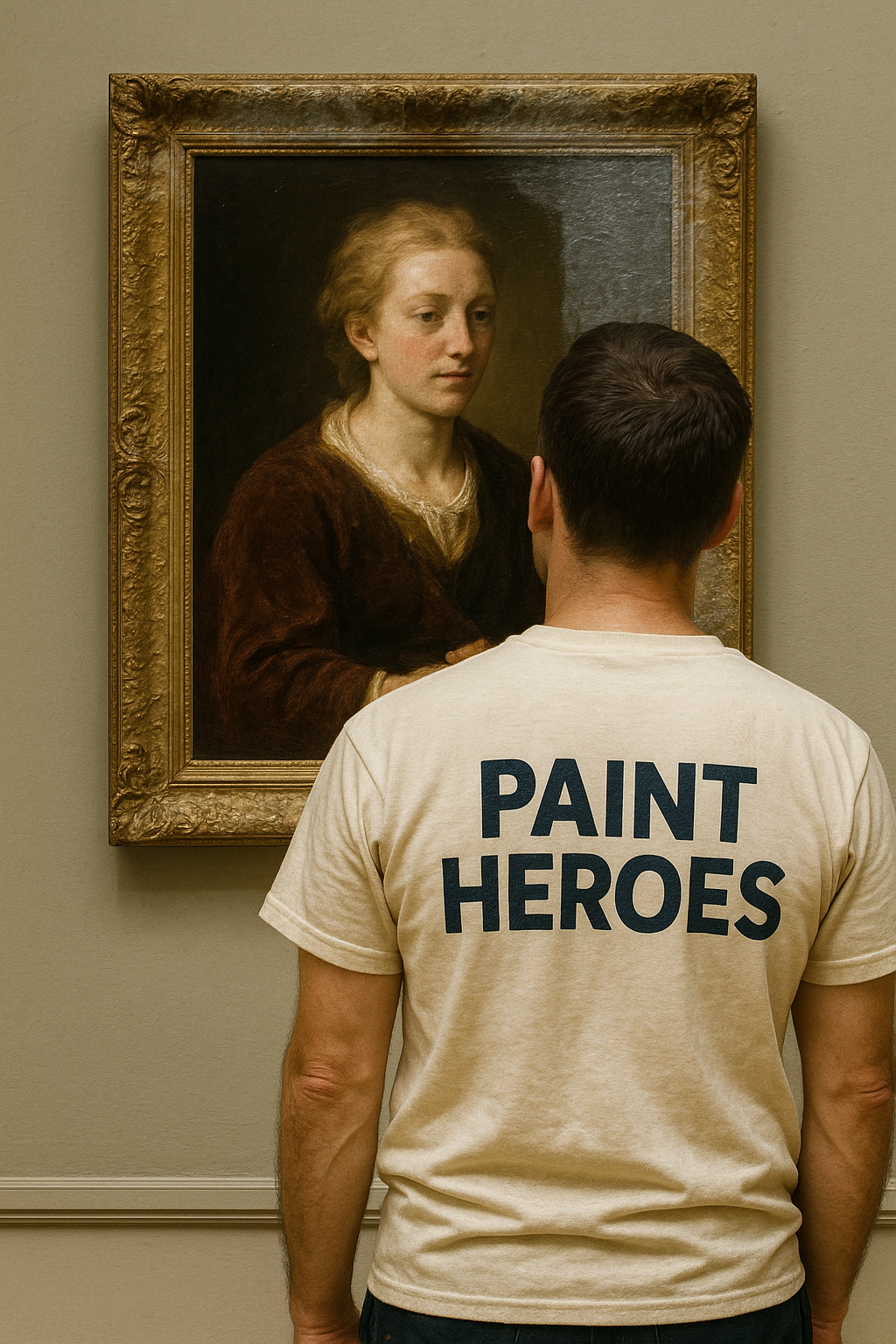How to Clean a Painting Without Damaging It—Expert Cleaning Tips
How to Clean a Painting: The Professional Guide to Saving Your Art and the Splendor of Your Home
How to Safely Maintain Your Paintings: Paint Heroes’ Professional Tips
Your canvasses not only adorn your walls but bring life, color, and personality to your home. Whether it’s an old family picture, an cherished landscape painting, or an abstract burst of color, learning how to clean a painting is an ability all householders could learn. Here at Paint Heroes, we aren't just expert house painters providing perfect finishes—-we care about maintenance and long-term care of all items in the space you inhabit, including those prized canvasses. With over four decades of servicing thousands of customers, our Paint Heroes staff has become the go-to guru on both the cleaning and maintenance of painted finishes, combining scientific know-how with aesthetic sensibilities.
Hereafter lies our expert advice on painting cleaning, the ins and outs and little known secrets most fail to heed. Here’s how you’ll learn how to know when you’re just dusting the painting as opposed to gently restoring it so it stays as fresh as the day it first caught your eye. Whether it’s in the living room or in the foyer, our tips will keep it the hub of the home.
Learning About Your Painting: Why It Matters Before Cleaning Begins
Before you go for a cloth or cleaner bottle, it’s important to think about the kind of painting you have. Cleaning an old oil painting differs greatly from how you’d clean acrylics or watercolors. Each paint responds uniquely to moisture, heat, as well as touch. In the event your painting appears on canvas, wood paneling, or paper, each substrate presents something different.
By learning the medium of your painting, you also learn the blueprint for safe cleaning. Say oil paintings tend to develop a film of dust and particulate grime but are super sensitive both to harsh chemicals and to moisture. Acrylics are less unforgiving but will lose their pop when scrubbed. Watercolors, due to their frequent glazing behind glass, seldom need spot cleaning—frequently the dusting of the glass suffices.
Taking the painting’s age, level of glossiness, and style of frame into consideration also enters the equation. Should you be unsure about any of the foregoing, our painting professionals at Paint Heroes can advise you on how best to gauge your collection as well as choose the safest cleaning method.
Dusting Like a Pro: How to Clean a Painting without Causing Damage
Begin with the weakest technique available—most times, a dry, soft-bristled brush is your best bet. We also highly suggest using a high-end, natural-bristle paintbrush or microcloth when dusting both new and old canvases. Work from the top down and stroke gently in slow, gentle movements. What you want to do is gently raise the dirt and dust without drawing something into the painting.
If it’s an oil painting in frame, don't forget the frame itself when it comes time for dusting. An old elaborate frame takes kindly to being dusted with a soft-bristle paintbrush, but newer frames with simpler designs may withstand a dry-to-touch microfiber cloth. Always dust in natural lighting when you can see all details and don't miss any spots.
Always avoid feather dusters or vacuum cleaner attachments on varnished surfaces. Although they may sound lazy polite, they tend to force dirt deeper in or rub off sensitive varnishes. For further detailed advice, see [The National Gallery’s art care guide](https://www.nationalgallery.org.uk/paintings/research/cleaning) (CLICK HERE) for expert advice on how to remove basic dust.
Spot Cleaning Stubborn Grime: What to Do When Dust Isn’t Enough
Have you spotted dirt, fingerprints, or an unknown smudge on the painting? Don't rush for household cleaners. Everyday items such as all-purpose sprays, glass cleaner, and alcohol-based wipes may fix varnishes permanently or dissolve pigment.
Rather, lightly wet a fresh cotton swab using distilled water alone. Softly test an inconspicuous small area on the painting’s edge before treating the primary area. Should the paint hold steadfast and discolor not occur, then you may carefully roll the cotton swab over the stained area—never rub or apply Pressure. Should color at any time you see migrate onto the swab, then at once cease.
At Paint Heroes, our painters know all too well how inappropriate cleaning procedures can cause permanent harm. In the case the area stubborn or you suspect it may, it’s best to bring it up to conserve the area or call upon an experienced professional not to further compromise the area. For expert guidance on safe cleaning and conservation of paintings, see the National Gallery’s Art Care Guide.
Avoiding Common Cleaning Mistakes: The Hidden Risks of DIY Approaches
It’s simple to get caught up in the quick fix. Sadly, DIY tips available on the Internet tend to recommend cleaning methods that compromise the integrity of your painting. Excess water or an inappropriate type of cloth may warpingly lead to mildew or discoloring. Excessive direct or indirect sunlight and heat, as well as the use of an inappropriate lamp when cleaning, may cause painting to dry out or fade.
Always suggest working in the cool shade and making sure the cleaning equipment super-soft. Never attempt to clean paint that's flaking or has cracks in it as the gentle touch alone could cause you to lose artwork. Should the painting display signs of hurt, then the best thing you could do is call in the professionals.
It's our Paint Heroes experience beyond painting walls—offering peace of mind too, with expert guidance on how to protect each painted surface at home. In extremely challenging cases, it may be worth calling in a qualified art conservator.
Deeper Involvement: In What Cases Should Professional Intervention Be Used?
In some situations you need an expert. If the varnish on your painting is yellowing, if mold is evident, or flaking has begun, then the best thing to do is professional restoration - the safest (and cheapest) bet. Don't ever attempt to clean valuable or antique items at home.
To commemorate the memory of the deceased forever, our staff at Paint Heroes can link you up with the locally accredited art restorers. During the time of restoration, they work closely with the specialists on spot restorations for free.
Keeping a Clean Painting: Preemptive Measures for Long-Term Good Looks
Keeping the painting spotless is the simplest way. Don't allow buildup in the first place. Clean the painting gently about four times per year, don't keep them in smoky or oily rooms such as the kitchen, and don't display painting by the air vents or the fireplace.
Framing the painting in UV-protected glass and rear support can protect delicate works. Should you ever be unsure, our painters at Paint Heroes are pleased as punch to walk you through maintenance programs holding every painted surface—from bedroom walls to inheritance canvases—supremely lovely.
Frequently Asked Questions: Solutions for Your Painting Cleaning Worries
Q. How frequently should I clean the painting?
A. We suggest dusting your painting two to three times per month. Don’t wait until dust is visible—gentle, regular care helps maintain the colors and keeps your home feeling bright.
Q. Can I use soap or cleaning sprays on my painting?
A. Absolutely not. Even mild soaps or sprays can damage the surface, causing discoloration or fading. If plain distilled water on a cotton swab doesn’t lift the dirt, it’s time for professional evaluation.
Q. How do I clean the frame?
A. For metal or wooden frames, use a soft, barely damp cloth. For ornate or vintage frames, a dry soft paintbrush works best to reach into crevices. Always clean the frame before dusting the painting to prevent dust from falling onto the surface.
Q. What should I do if my painting develops water spots or mold?
A. Stop cleaning and move the painting to a dry area. Stains or mildew indicate underlying issues, often requiring professional help. Paint Heroes can provide expert advice or connect you with the right conservator.
Q. Is there ever a time to clean a painting more aggressively?
A. Never attempt aggressive cleaning at home. If routine dusting and gentle spot cleaning are ineffective, the risks outweigh the benefits. Always trust professionals to avoid accidental damage.
A. Paint Heroes believes all painted surfaces in your home deserve care and protection, just as much as your most treasured artworks. Whether it’s routine maintenance, cleaning, or touch-ups, our team is just a call away. Our expertise ensures that every painting and surface stays beautiful and inspiring for generations.
At https://www.paintheroes.com/ we can help by recommending expert knowledge or choosing the right conservator. Is there ever too much time for cleaning a painting more forcefully? Never resort to fierce home cleaning. In cases where normal dusting and spot cleaning do not help, the danger exceeds the advantage. Leave it for professionals where harm by accident might occur. PaintHeroes believes all the painted areas at home deserves praise as well as protection just as much as those priceless artworks you hold so dear. In maintenance requirements, cleaning, or touching up at home painting, our reliable professionals at PaintHeroes are just one call away. Let our expertise as painters for houses inject care as well as assurance at those valued areas of yours so they may continue for generations inspiring all who see them.
Expert Painting Insights: Transform Every Surface with Paint Heroes
Discover how professional painting methods, materials, and maintenance tips enhance beauty, durability, and value in every home.
How Much Does Painting a Car Cost?
Why Are Men Painting Their Nails?
How to Prep a Room for Painting
How Much Does Interior Painting Cost?
How to Prep Cabinets for Painting
How Long After Painting Can I Sleep in the Room?

